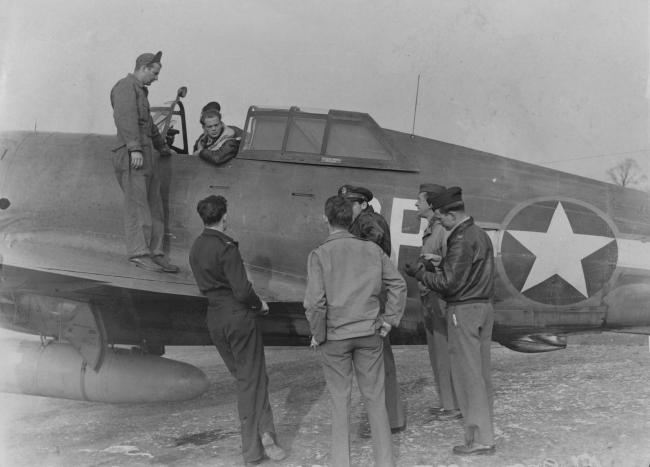FRE 25
IMAGEBy downloading this image, you are agreeing to our Terms and Conditions
Interior of a mess room at Debden air base where the 4th Fighter Group are based. Two officers read while a third is sprawled on a chair in the background. The two men in the foreground are, on the left, Captain Alexander Rafalovich, and on the right, Lieutenant Allen F. Bunte. Both pilots are part of the 334th Fighter Squadron. Passed for publication 15 October 1943. Printed caption attached to print: 'American Thunderbolt Fighters are proving a terror to the Germans. The pilots (former members of the RAF) flying their high altitude fast diving fighters that have accounted for many enemy planes. In one raid over Paris the fighters of this Station accounted for 17 down, 5 probables and one damaged 15/10/43'. And 'O.P.S. Flying Officer A RAFALOVICH of California and Lt. A.F. BUNTE of Florida taking it easy between flying operations.'
Connections
See how this entry relates to other items in the archive by exploring the connections below.
Units

- Unit Hierarchy: Squadron
- Air Force: Eighth Air Force
- Type Category: Fighter

- Unit Hierarchy: Group
- Air Force: Eighth Air Force
- Type Category: Fighter
People

- Military/Civilian/Mascot: Military
- Nationality: American
- Unit: 334th Fighter Squadron 335th Fighter Squadron
- Service Numbers: O-885497
- Highest Rank: First Lieutenant
- Role/Job: Fighter Pilot

- Military/Civilian/Mascot: Military
- Nationality: American
- Unit: 334th Fighter Squadron
- Service Numbers: O-885589
- Highest Rank: Captain
- Role/Job: Fighter Pilot
Locations

- Site type: Airfield
